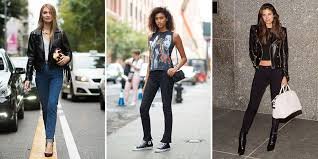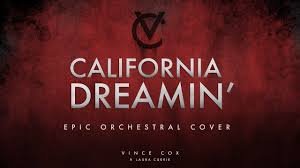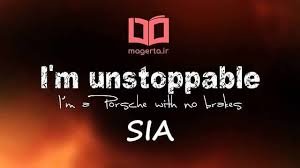
rock star outfit
Leather Jackets and Denim
Leather jackets are perhaps the most iconic piece of any rock star’s outfit. Popularized in the 1950s by Elvis Presley, and later embraced by punk, metal, and grunge artists, the black leather jacket symbolizes rebellion, freedom, and power. The classic Perfecto-style biker jacket with zippers and wide lapels became a trademark look for bands like The Ramones and The Clash. Alongside leather, denim—especially ripped jeans or a denim jacket—adds a rugged, rebellious edge to the ensemble. Often adorned with patches, studs, or DIY paint, these denim pieces reflect individuality and attitude central to the rock lifestyle.
Band Tees and Graphic Shirts
The band t-shirt is both a fan’s badge of loyalty and a rock star’s staple. Artists wear their own merchandise or promote other bands they admire. Vintage band tees from legends like AC/DC, Metallica, or The Rolling Stones are collector’s items and often worn both on and off stage. Paired with tight pants or layered under leather jackets, graphic shirts featuring skulls, protest art, or album covers also reinforce the rebellious, anti-mainstream ethos of rock culture. These tees are sometimes distressed or oversized to give a more worn, authentic feel, especially within punk and grunge subgenres.
Tight Pants and Leather Trousers
Slim silhouettes define many rock star wardrobes. Whether made of leather, denim, or spandex, tight pants accentuate the movement of performers and create a bold, body-conscious look. In the 1970s, David Bowie and other glam rock artists made shiny, metallic pants iconic. In contrast, metal musicians often prefer black leather trousers, usually paired with boots and sleeveless shirts for a dark, aggressive aesthetic. Skinny jeans also became a hallmark of the indie rock and garage rock scenes in the early 2000s.
Accessories: Studs, Chains, and Sunglasses
No rock star outfit is complete without bold, gritty accessories. Studded belts, spiked wristbands, and metal chains are worn to project toughness and individuality. Artists like Slash from Guns N’ Roses made layered chains, leather hats, and signature sunglasses part of their signature look. Sunglasses, especially aviators and oversized styles, are practical for harsh stage lighting but also add mystique and confidence. Accessories often carry symbolic value—from religious icons to political badges—and further help the artist connect with their identity and audience.
Footwear: Boots, Sneakers, and Heels
Footwear in rock fashion varies greatly by subgenre but always contributes to the performer’s presence. In punk rock and metal, combat boots and Dr. Martens became staples, offering both durability and rebellious energy. Platform boots, popular in the glam rock era, added height and theatrical flair—seen on artists like KISS and T. Rex. In contrast, the grunge era favored beat-up sneakers, especially Chuck Taylor All-Stars, to reflect a nonchalant, anti-fashion attitude. Modern artists often blend these styles, wearing designer heels or high-top sneakers to mix ruggedness with luxury.
Glam Rock and Theatrical Style
Glam rock brought theatricality to rock fashion. Artists like David Bowie, Freddie Mercury, and Marc Bolan embraced sequins, feathers, velvet, and eye-catching prints. Gender-fluid, flamboyant, and bold, glam fashion challenged norms and made fashion an integral part of performance. Stage outfits often included jumpsuits, capes, and platform heels. The look was dramatic, androgynous, and unapologetically bold. Glam rock fashion continues to influence today’s stars, especially those who view music and fashion as two parts of a single creative identity.
Grunge and Anti-Fashion
The early 1990s grunge movement, led by bands like Nirvana, Soundgarden, and Pearl Jam, introduced a raw, unpolished look to rock fashion. Think oversized flannel shirts, ripped jeans, thermal layers, and worn-out sneakers. Inspired by thrift stores and working-class aesthetics, grunge fashion stood in contrast to the polished glam of the 1980s. Kurt Cobain’s reluctant fame made his messy, effortless style iconic. This anti-fashion message ironically influenced mainstream fashion and remains relevant in streetwear and alternative scenes.
Punk Rock and DIY Attire
Punk fashion is defined by its rebellious spirit and DIY ethos. Originating in the 1970s, punk style includes ripped clothing, safety pins, anarchist symbols, and spiked hair. Artists like Johnny Rotten and Siouxsie Sioux embraced deconstruction as art. The leather jacket, often customized with band names, studs, and slogans, became a visual protest. Designer Vivienne Westwood helped bring punk fashion to the runway, but the spirit remained anti-authority and grassroots. Plaid pants, fishnets, and combat boots are also key elements of punk fashion, emphasizing individuality and resistance.
Stage Costumes and Visual Identity
For many rock stars, fashion is performance art. Bands like KISS wore armor-like costumes and face paint to create larger-than-life personas. Alice Cooper used horror-inspired outfits to build a gothic rock identity. Prince, although crossing into pop, created a visual legacy with his use of lace, satin, heels, and color-rich suits. These artists use clothing to become characters on stage, giving fans a full sensory experience. Their fashion choices are not just decorative—they’re strategic, theatrical, and unforgettable.
Gender Expression and Identity
Fashion in rock has long challenged gender boundaries. Artists like Annie Lennox, David Bowie, and Grace Jones embraced androgynous fashion to make bold cultural statements. In recent years, artists such as Harry Styles, Yungblud, and Billie Joe Armstrong have continued to wear skirts, makeup, and pearls, refusing to conform to traditional gender norms. These fashion choices contribute to important conversations about identity, expression, and freedom, proving that rock fashion is also a platform for social change.
Modern Rock Star Looks
Today’s rock stars mix past influences with modern innovation. Machine Gun Kelly, Måneskin, and Demi Lovato blend punk, metal, glam, and grunge into new hybrid styles. Social platforms like Instagram and TikTok allow artists to showcase their evolving fashion narratives in real time. Streetwear, high fashion, and vintage often collide in one look. While the clothing has evolved, core elements—attitude, authenticity, and individuality—remain central. Even as trends shift, the essence of rock star fashion continues to celebrate nonconformity and creativity.
Conclusion
From the rebellious leather jackets of the 1950s to the gender-fluid runway outfits of today, rock star fashion has always been about more than looking good—it’s about identity, freedom, and expression. Whether glam or grunge, punk or indie, each style tells a story of its time, its sound, and its spirit. The influence of rock fashion extends far beyond the stage, shaping streetwear, high fashion, and youth culture. As long as rock exists, so will its unique way of dressing: loud, bold, and always authentic.






